Inspiration
Proper Fire Feature Care
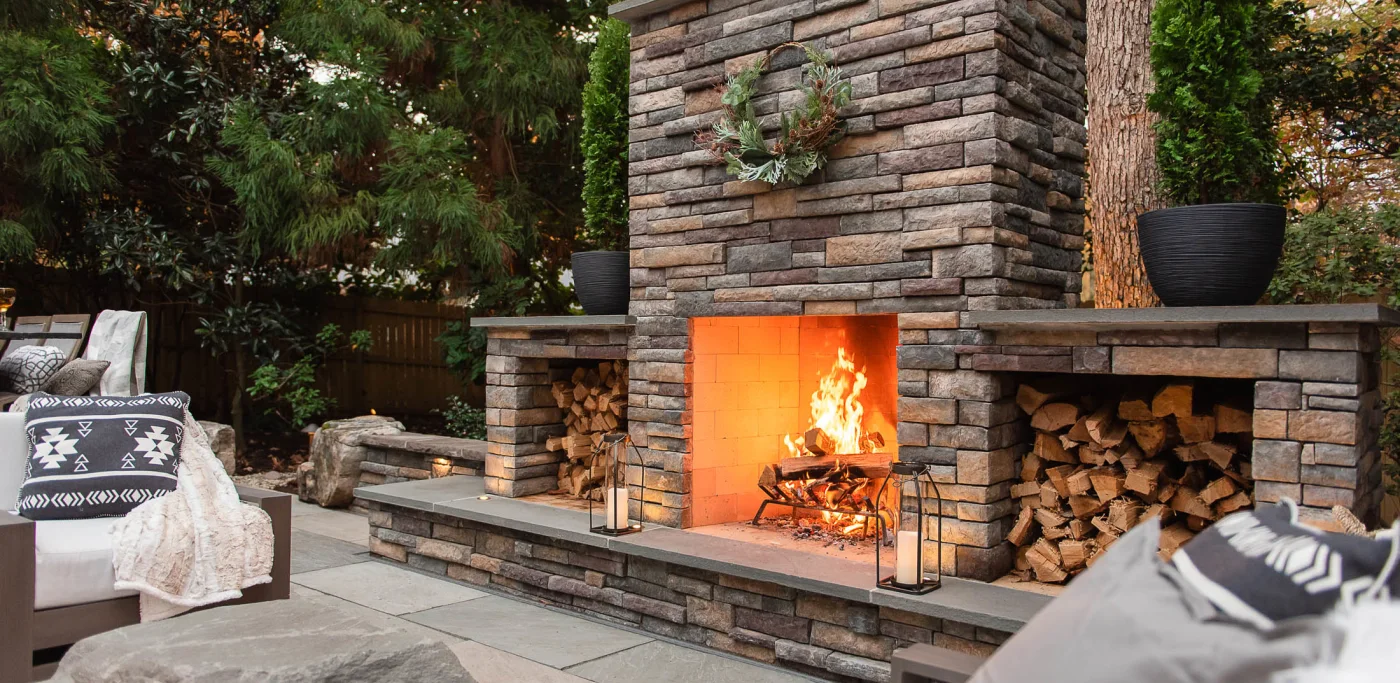
Story Highlights
For many, fire features are the most enjoyable aspect of their outdoor living space. In order to keep the good times rolling, it is important to properly enjoy and maintain your fire pit or fireplace. Despite being made of durable masonry components, fire features are very susceptible to damage and excessive wear when improperly cared for.
Whether your outdoor living space includes a fire pit or fireplace, this article provides you with all of the guidance you need to properly enjoy and maintain your fire feature.
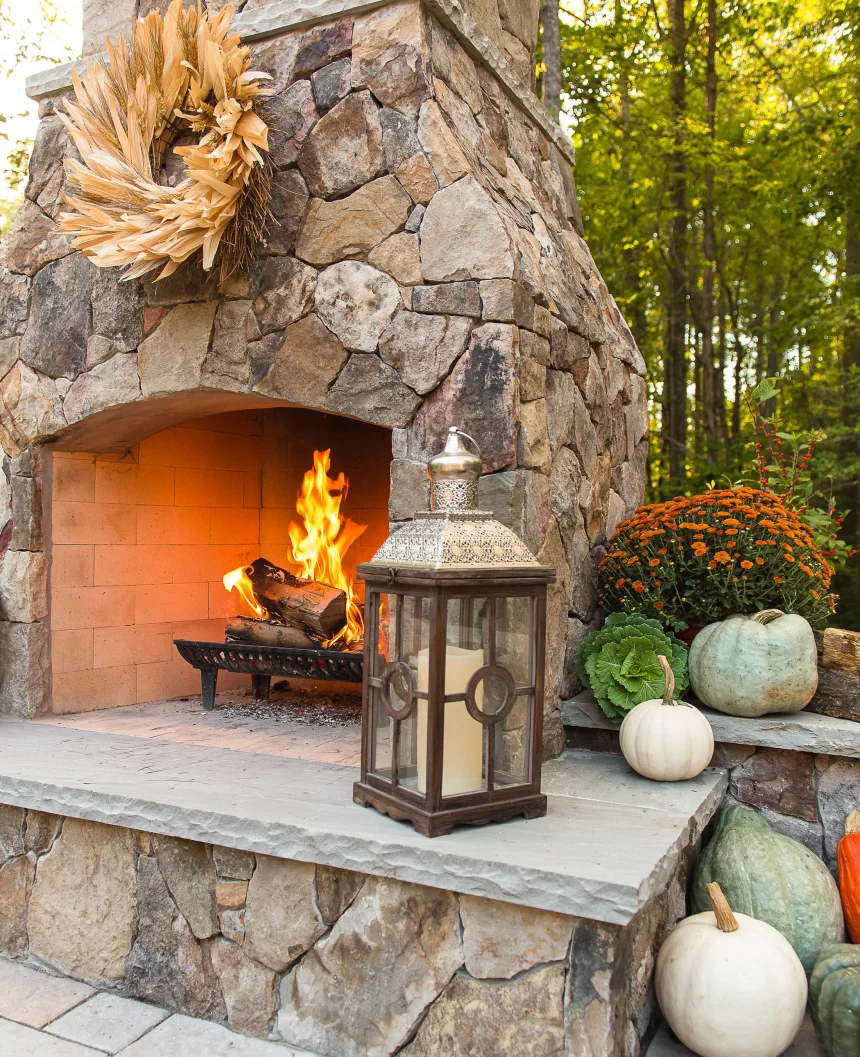
Expansion & Contraction
It is natural and common knowledge that heat causes materials like metal, soil, glass, wood, stone and concrete to expand, contract, warp, melt, change shape, etc. This is a law dictated by nature and not Outdoor Dreams. If your Outdoor Dreams fire feature expands and contracts, it can cause hairline cracks in the exterior veneer that are cosmetic and not structural failures of the feature. Expansion cracks most commonly appear in the mortar joints, normally in the area that endures the highest heat and is closest to where the fire burns.
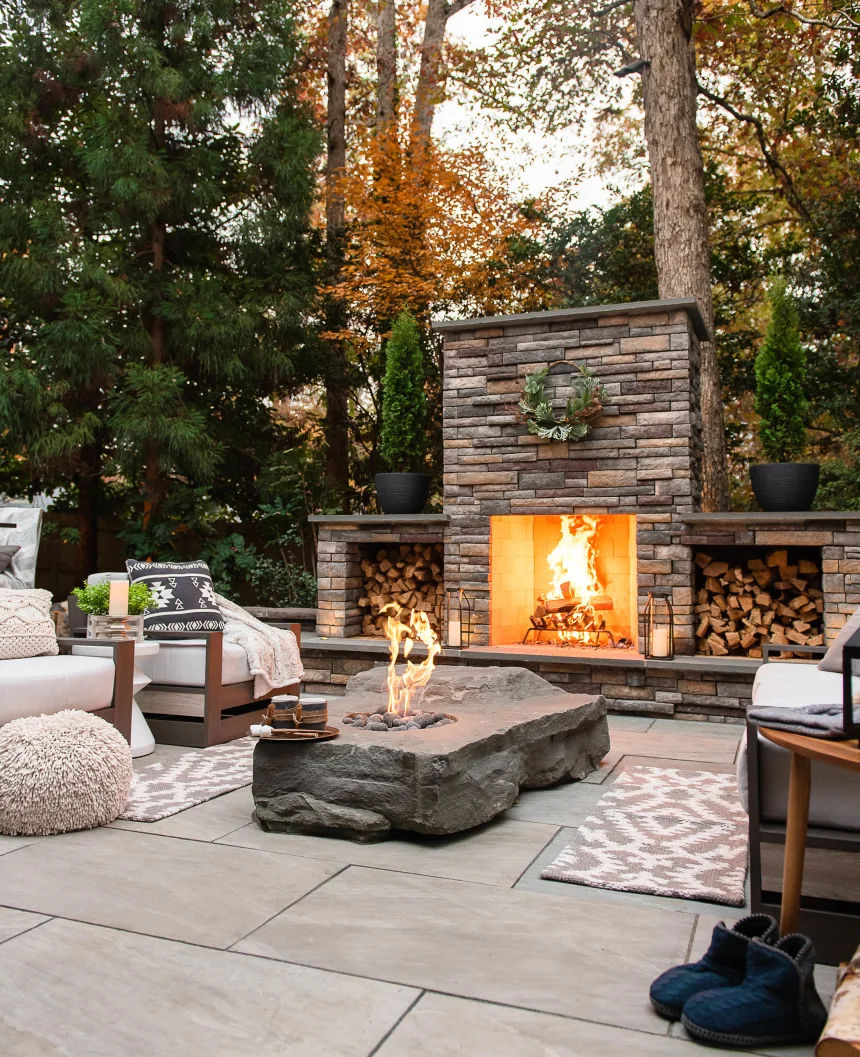
Effect of Moisture
Concrete/stone, moisture and heat do not work well together. Heat and moisture create steam and steam has the ability to move the concrete/stone and an overabundance can cause damage. Concrete and stone will absorb moisture from rain, snow, human watering and even moist, humid air. It is recommended that you wait 28 days after construction to use your fire feature, allowing the mortar joints and exterior veneer ample time to cure. If your fire feature is going to be used after being exposed to moisture, start a small fire and heat the appliance up slowly and avoid large fires until the unit has had ample opportunity to dry from the inside out. This may take several hours depending on the amount of moisture the unit has been exposed to; plan accordingly when you intend to use your feature.
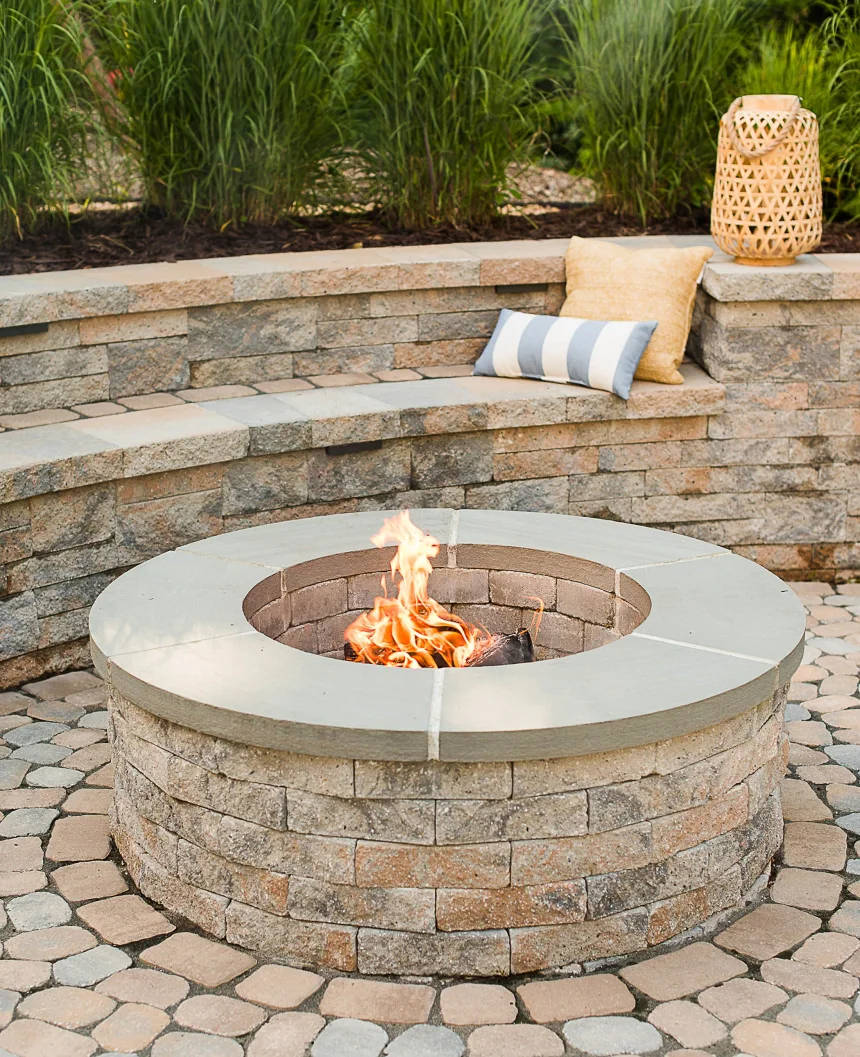
Thermal Cycling
Thermal cycling is a process of alternatively cooling and heating material. This enhances the strength and performance of materials thereby improving the longevity and stress-bearing qualities. This process induces what is known as molecular reorganization, optimizing a material’s molecular structure and making it denser and more uniform. The process involves heating the part repeatedly and then allowing it to return to ambient temperature. In short, your fire feature will gain strength with every use, but it’s important to start carefully with small, shorter-length burns. The groundbreaking of your feature should NOT be a large, grand fire that you run for hours. If you are planning a christening party for your outdoor living space, be sure to have a few small, short fires in the days leading up to your gathering.
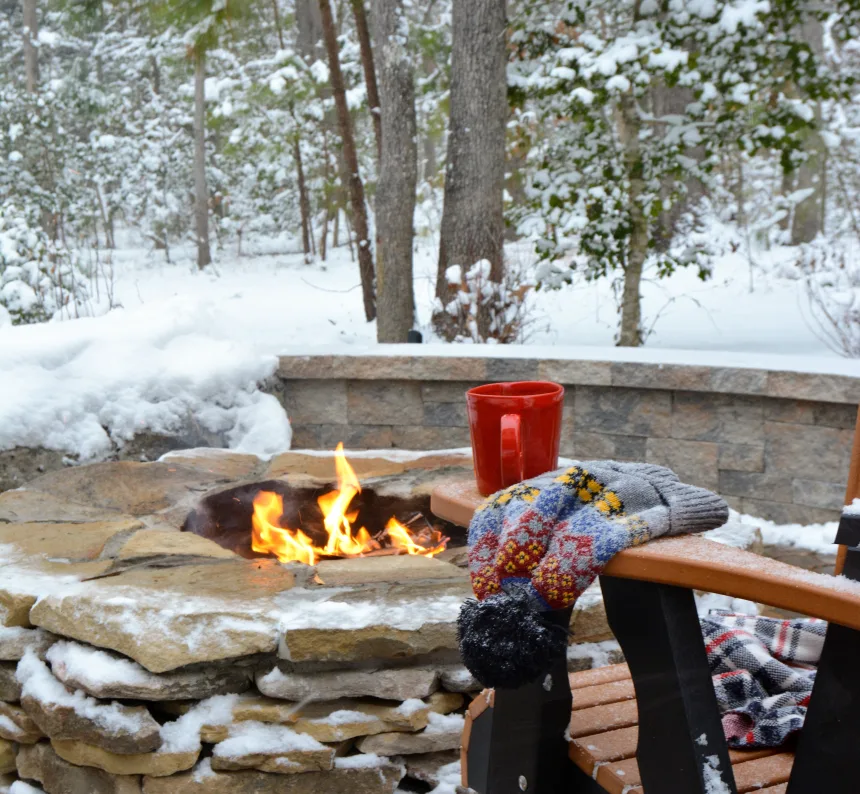
Effects of...
Cold Temperatures
When the ambient temperature of your fire feature is 40 degrees and below, special consideration should be taken. Heating a concrete or stone appliance too quickly no matter what the ambient temperature can cause damage, but is much more likely when the feature is below 40 degrees. The colder the ambient temperature, the more cautious you should be when building a fire. This is not to say that you cannot use your fire feature in cold temperatures. It is recommended that you build a small fire in the beginning and heat the appliance slowly until it reaches normal operating temperatures.
It's Time to get serious...
Overfiring, Excellerants, and Extinguishing
Even though Outdoor Dreams’ fire features are made of heat-tolerant refractory materials, they can be damaged from overfiring. All materials have their limitations on the amount of heat they can endure and can be damaged if they are operated beyond those limitations.
Always burn a fire in the center of the feature on a log grate and away from the walls. Do not let logs lean against the walls of your feature; the intense heat could cause cracking while in use or during the cooling process.
To prevent over-firing, never burn more wood at one time than the log grate is capable of holding. USE COMMON SENSE.
Never use accelerants like gasoline, alcohol, oil or any liquid to light or enhance the size of a fire. This could severely damage the fire feature and also creates the risk of an explosion and bodily harm.
NEVER extinguish a fire using water, liquid or any suppressant that would create an immediate temperature contrast; this can and will cause cracking of stone, mortar, and concrete.
Additional Safety Precautions
A fireplace can bring many hours of enjoyment, comfort, and warmth if operated and maintained properly. Certain safety precautions must be observed to eliminate the dangers associated with fire and provide a satisfactory, smoke-free fire.
-
When burning wood, use solid, seasoned wood only. Do not use scrap wood, artificial wax-based logs, treated wood, coal or woods dipped in pine tar or pitch.
-
Never use gasoline or other combustible liquids when starting a fire.
-
Keep combustible furniture, pillows, blankets etc. at least four feet from the opening.
-
Never leave unattended.
-
Be extremely careful when adding wood and handling fireplace tools. Never throw, kick or by any other means force wood into the firebox as this could damage the firebrick and fireplace walls, resulting in permanent damage.
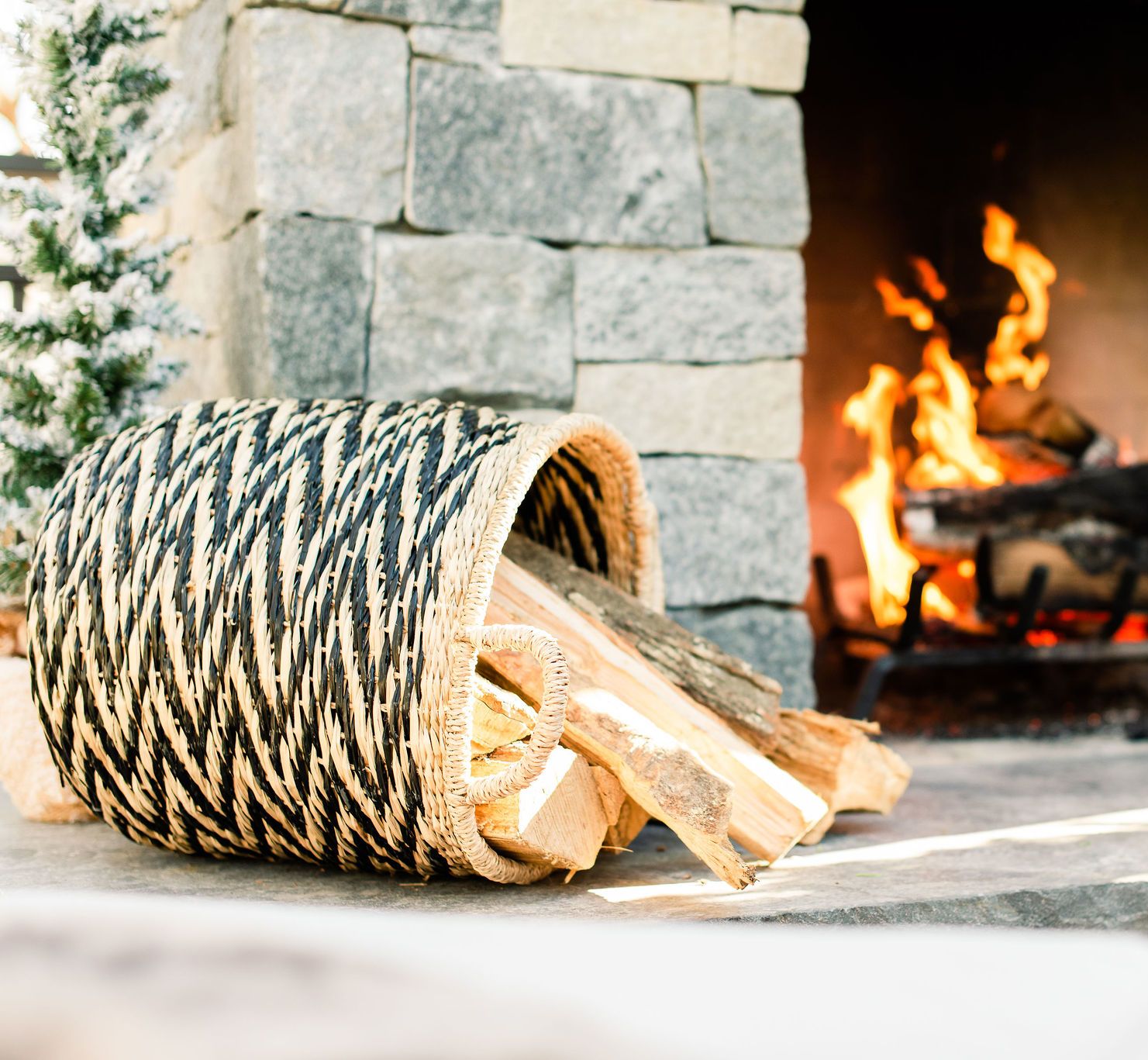
Proper Wood Selection
Use cured wood logs only. Scrap wood produces sparks. Treated wood, coal or woods dipped in pine tar should not be used because they may leave a combustible residue in the fireplace and chimney. Use of seasoned wood is preferred.
Last but not least...
Building a Proper Fire
-
Use a log grate with your fireplace when burning wood. This will contribute to good air circulation around the wood, and keep the wood out of the ash.
-
Remove any excess ash from the fireplace. Excessive ash may reduce airflow. Some owners prefer to leave a small layer to insulate the cold refractory below the grade, helping fire starting.
-
Center the log grate in the firebox.
-
Crumble several newspapers across the fire area underneath the grate. Criss-cross kindling wood on top of the grate, above the newspaper.
-
Lay three logs on the grate; two side by side and the third in pyramid fashion on top. Split longs will start faster. Make sure there is space between the logs for air circulation. As the air is heated, it is drawn upwards through the space between the logs, creating more combustion.
-
Light the paper at both sides of the firebox.
-
Make sure the fire remains centered in the firebox. Don’t let it move to the front or sides. Move it back with a poker.
-
Add more wood to the fire as necessary.
Relaxing Windsor Farms Retreat Project
Relaxing Windsor Farms Retreat Project
The design features numerous exciting elements including a pavilion-covered patio, gas fireplace, outdoor, water feature, stepping stone walkway, driveway with parking area, custom shed, and a new landscape that completes the relaxing and natural atmosphere. Without question, the resulting space is truly a full backyard transformation.
Estimating Third-Party Designs
Estimating Third-Party Designs
At Outdoor Dreams, we occasionally receive inquiries from homeowners or designers asking if we can provide an estimate based on plans that have already been developed by another architect, landscape architect, or designer. While the answer is yes, it’s important to understand that our approach is different from a traditional contractor's—and it comes with a $1,500 fee. Here's why...